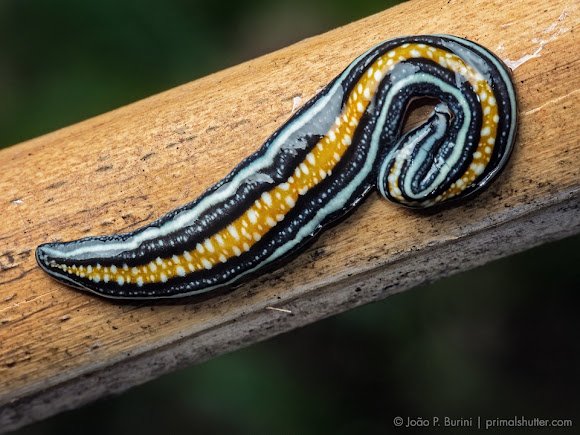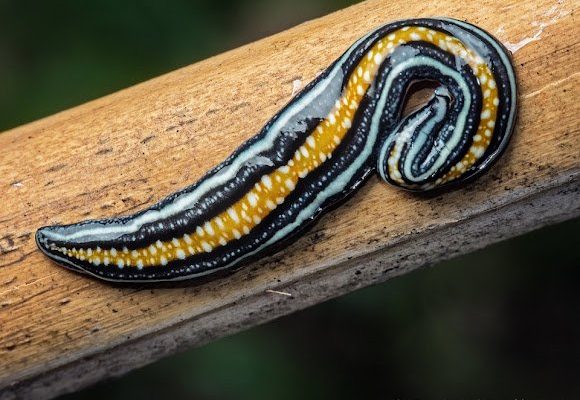
Flatworms belong to the phylum Platyhelminthes, and they’re surprisingly diverse, ranging from tiny species to larger ones that can be several feet long. But spotting them isn’t as straightforward as it seems. You’ll face a mix of challenges, from their varying colors and shapes to their habit of hiding in murky waters. So, let’s dive into the field identification challenges of spotting these slippery little critters—like we’re sifting through a muddy pond, looking for the hidden gems beneath the surface.
Understanding Flatworm Diversity
When it comes to flatworms, diversity is the name of the game. They come in many forms, sizes, and colors. Some are bright and attention-grabbing, like the stunning *Pseudobiceros bedfordi*, which flaunts vibrant hues and intricate patterns. Others are more muted and blend effortlessly with their surroundings. This variety can make it tricky to identify them in the field.
Flatworms can be broadly classified into two groups: free-living and parasitic. Free-living flatworms, often found in marine environments, are usually easier to spot because they often come out into the open. In contrast, parasitic flatworms tend to hide in their host organisms or burrow into the substrate, making them nearly invisible during a casual observation.
To complicate matters further, even within a single species, flatworms can exhibit significant variations based on their habitat. For example, a flatworm from a clearer lake might look slightly different than one from a murky pond. So, how do you tell them apart? It requires a keen eye and some knowledge of their characteristics.
Physical Characteristics to Observe
If you want to identify a flatworm, you’ll need to pay close attention to its physical traits. Flatworms are usually long and ribbon-like, but their colors and patterns can vary wildly. Some are smooth and shiny, while others have a more textured appearance. Here’s what to look for:
- Body Shape: Flatworms are known for their flattened, elongated bodies, which are often tapered at both ends.
- Color Patterns: Some flatworms are solid in color, while others boast intricate patterns or designs that can help with identification.
- Size: Flatworms can range from tiny species less than an inch long to sizable creatures that can exceed several feet. Size can help narrow down your options.
- Surface Features: Look for additional features such as eyespots or specific markings that might indicate a particular species.
You might be wondering how you’re supposed to remember all this while out in the field. The truth is, it takes practice. One way to make it easier is to take photos and notes so you can compare your findings later.
Environmental Factors Impacting Identification
The environment plays a crucial role in flatworm identification. Flatworms thrive in a variety of habitats, including freshwater, saltwater, and damp terrestrial areas. However, their habitat can greatly affect their visibility and features. In clear waters, for example, flatworms may be more easily spotted due to the contrast against the substrate.
In murky waters, however, these creatures can become nearly invisible, making identification a real challenge. The sediment can cloud their colors, and their often elongated shapes become harder to distinguish against the background. Even lighting conditions can impact how you perceive their colors and details.
Additionally, the time of day can change your luck. Flatworms, like many creatures, may be more active during certain times. Early mornings or late afternoons can be prime time for spotting flatworms, as they may venture out to feed or mate. Remember, sometimes you just need to be in the right place at the right time!
Behavioral Traits to Keep in Mind
When identifying flatworms, understanding their behavior is equally important. These creatures can be quite elusive and may hide if they sense danger. Here are a few behavioral traits to observe:
- Movement: Flatworms glide smoothly across surfaces. If you see a creature moving in a wavy motion, there’s a good chance it’s a flatworm.
- Feeding Patterns: Some flatworms are known to feed on small organisms, like tiny crustaceans or algae. Watching how they interact with their environment can provide clues to their identity.
- Hiding Spots: Flatworms often seek shelter under rocks, in seaweed, or in mud. Checking these areas can increase your chances of spotting one.
If you’re struggling to see a flatworm, try gently disturbing the substrate or surrounding vegetation. Often, these actions will coax them out into the open. Just be mindful to keep the environment healthy so future generations can spot these creatures, too!
Tools and Techniques for Better Identification
Equipping yourself with the right tools can significantly enhance your flatworm spotting experience. A good pair of binoculars can help you see details from a distance without disturbing their habitat.
Here are some additional tools that can help with identification:
- Field Guides: Investing in a quality field guide specific to your area can help you identify different species.
- Smartphone Apps: There are various apps designed to help identify wildlife through photos and descriptions.
- Note-taking Gear: Keep a small notebook for jotting down observations or sketches.
Techniques matter too. If you’re in an area known for flatworm sightings, consider being patient and waiting for a flatworm to appear rather than actively searching. Sometimes, just being still and quiet can lead to the best observations.
Common Misidentifications and How to Avoid Them
Misidentifying flatworms can happen easily, especially if you’re new to the game. For instance, you might mistake a flatworm for a type of leech or even a ribbon-like algae. Here’s how to avoid those pitfalls:
- Learn Key Differences: Familiarize yourself with the key traits that differentiate flatworms from other similar species, like leeches or nemerteans.
- Observe Environment: Consider where the creature is found—flatworms inhabit very specific environments that differ from leeches.
- Focus on Movement: Flatworms glide while leeches use a more inching motion. This can be a dead giveaway.
By honing your observation skills and understanding their unique traits, you’ll reduce misidentifications and gain more confidence in your fieldwork.
Why Spotting Flatworms Matters
Identifying flatworms isn’t just for the sake of curiosity. Understanding these creatures can provide valuable insights into the health of ecosystems. Flatworms serve as indicators of environmental conditions. Their presence and diversity can signal the quality of aquatic ecosystems, which is critical information for conservation efforts.
Moreover, spotting flatworms can also enrich your appreciation for biodiversity. By learning about and recognizing these creatures, you become a part of the larger conversation about preserving our natural world. It’s an invitation to engage with nature on a deeper level, leading to greater awareness and advocacy for our ecosystems.
In conclusion, the challenges of field identification when spotting a flatworm can feel daunting at first. But with practice, patience, and the right tools, you can navigate those twists and turns. Just remember: with each observation, you’re not only learning about flatworms but also contributing to a greater understanding of our environment. So grab your gear and head out there—the world of flatworms awaits!

